

|
|
|


|
|
1/14 Scale Electric Buggy:
Kyosho FA Series - Turbo Optima 14X - 9051
|
Released by Kyosho circa 1989, the Turbo Optima 14X RTR Buggy - # 9051 - was based on the FA Series (Factory Assembled) chassis, and came with a pre-painted Bodyshell, a Le-Mans X5 Motor, semi pneumatic spike Tires, Radio System (with 6 band options) and Electronic Speed Controller. Batteries and charger to be purchased separately.
The 2WD model is based on a molded plastic chassis, with a combined gearbox / gear differential, coil spring over friction dampers and bushings.
Check out our Kyosho Archive for other FA Series models.
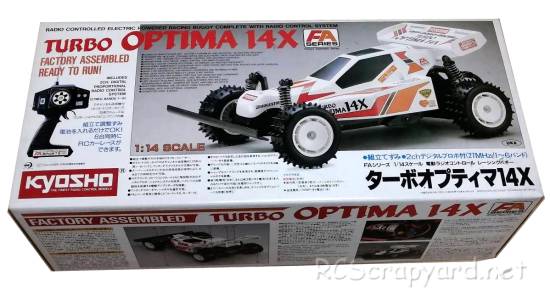
To get the best from the Kyosho FA Series - Turbo Optima 14X, it needs to be fine tuned, to provide precise steering response and improve grip when cornering, so you don't slide off the track. Small changes can make huge advancements and our easy to understand guide will help you to the optimum Set-up for your individual driving style.








|
|
|

★ Kyosho FA Series - Turbo Optima 14X - 9051 ★
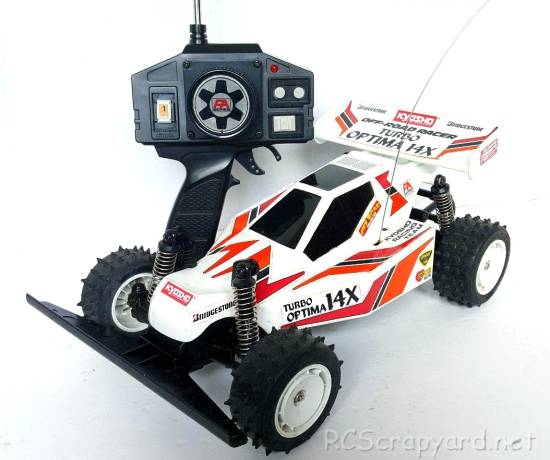
★ Kyosho FA Series - Turbo Optima 14X - 9051 ★
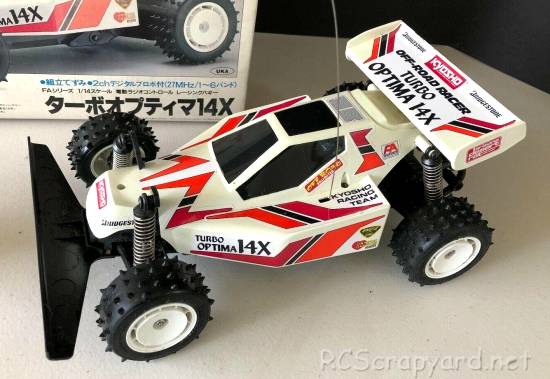
★ Kyosho FA Series - Turbo Optima 14X - 9051 ★
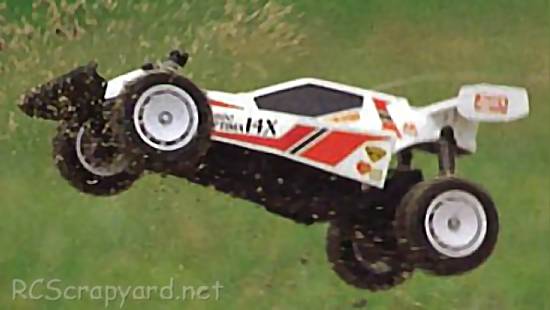
★ Kyosho FA Series - Turbo Optima 14X - 9051 ★
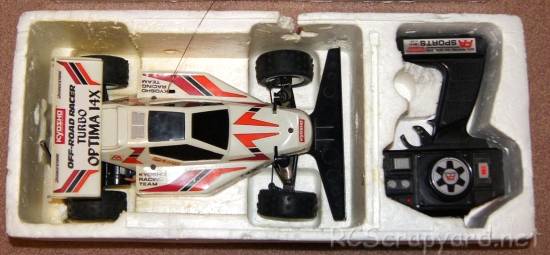
★ Kyosho FA Series - Turbo Optima 14X - 9051 - Chassis ★
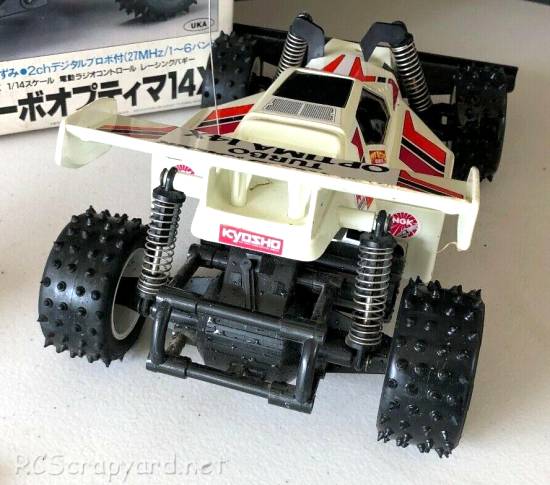
★ Kyosho FA Series - Turbo Optima 14X - 9051 - Chassis ★
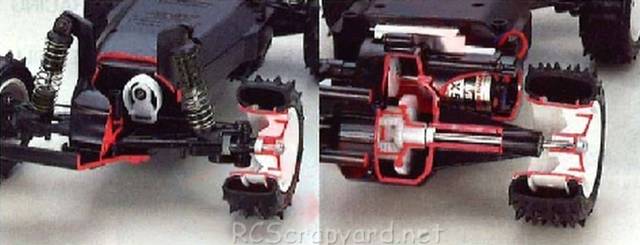
★ Kyosho FA Series - Turbo Optima 14X - 9051 - Chassis ★
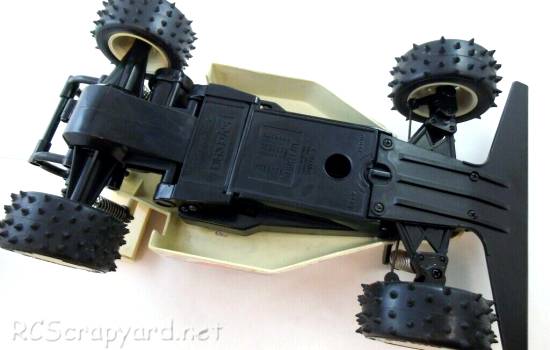
★ Kyosho FA Series ★
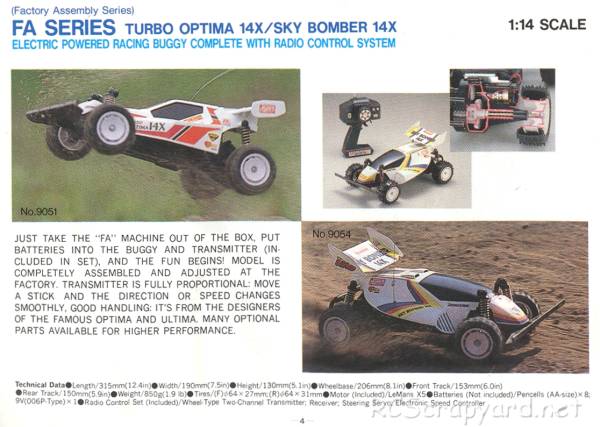
|
Buying a Used Radio Controlled Model
|
|
Manufacturers and Brands Catalogued, Listed and Reviewed by RC-Scrapyard.
At present, the RC Model Manufacturers, Brands and Distributors covered by us are: ABC Hobby, Academy, Acme Racing, Agama Racing, Amewi, Ansmann Racing, ARRMA, Team Associated, Atomic RC, Axial, AYK, Bolink, BSD Racing, Capricorn, Carisma, Carson, Caster Racing, Cen, Corally, Custom Works, Durango, Duratrax, ECX - Electrix, Exceed RC, FG Modellsport, FS-Racing, FTX, Fujimi, Gmade, GS-Racing, Harm, HBX, Helion, Heng Long, Himoto Racing, Hirobo, Hitari, Hobao, Hong-Nor, Hot Bodies, HPI, HSP, Intech, Integy, Jamara, JQ Products, Kawada, Kyosho, Losi, LRP, Maisto, Mardave, Marui, Maverick, MCD Racing, Megatech, Mugen, New Bright, Nichimo, Nikko, Nkok, Ofna, Pro-Pulse, Protech, PTI, RC4WD, Redcat Racing, RJ-Speed, Robitronic, Schumacher, Seben, Serpent, Smartech, Sportwerks, Step-Up, Tamiya, Team-C Racing, Team Magic, Thunder Tiger, Tomy, Top Racing, Traxxas, Trinity, Tyco, Vaterra RC, Venom, VRX Racing, WLToys, X-Factory, Xmods, Xpress, Xray, XTM, Yankee RC, Yokomo, ZD Racing and Zipzaps. |
|
Hints, Tips and Information
Battery Connectors
Over the years I have been racing radio controlled model cars of all descriptions, I have tried a number of different connectors for my batteries.
|
|
Hints, Tips and Information
My First National
When I first started in RC, way back in the late 1980s, I would turn up to the weekly club meeting, with my Tamiya Boomerang, Acoms transmitter, two sets of crystals, a couple of 7.2v batteries, a charger and a tool box with a wheel spanner and a few spares. |
|
RC Models:
|
Radio & Motors: |
Other
Accessories: |